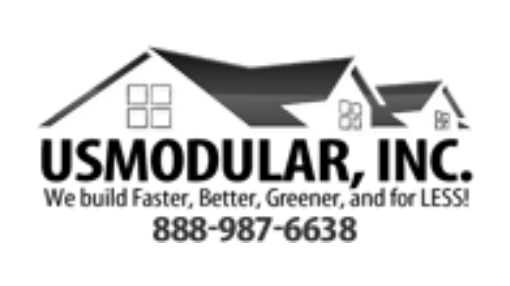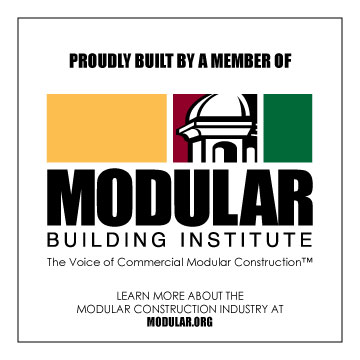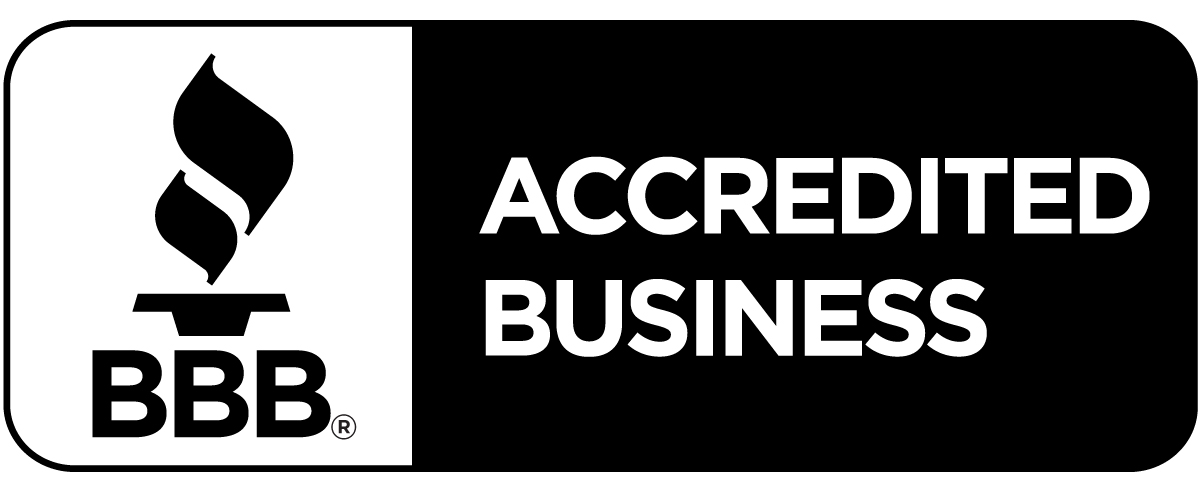Modular construction can reduce build time by 30-50% and provide an alternative solution in today’s tough market.
In the market for a new facility or addition but concerned about construction costs? Look to permanent modular construction as a way to acquire a new building in a tough economy. This alternative construction technique yields faster completion times, improved efficiency, cleaner materials, and better quality control.
A Different Construction Process permanent modular constuction is a method of construction, not a building type. It greatly differs from temporary buildings, such as construction trailers or mobile homes.
“These are custom-designed commercial buildings just like their site-built counterparts,” explains Phil Slingerland, COO of a firm specializing in modular construction. “Using permanent modular construction does not change the design, structural system, or finish materials options available to the owner and architect. The only difference is in the method of construction.”
After the design is finalized with an architect, construction plans are sent to a factory where the majority of the building is erected. permanent modular construction uses prefabricated elements for as many building components as possible. Everything from walls and mechanical systems to painting and carpet can be completed on the assembly line.
“The difference is that 60% to 90% of modular buildings are completed offsite in a controlled production environment, including all MEP, fixtures, and interior finishes,” says Tom Hardiman, executive director of the Modular Building Institute (MBI).
While modules are assembled at the factory, sitework can begin at the same time, such as laying the foundation or prepping utility connections. This greatly decreases the time needed for total construction. Modular buildings are often completed 30-50% faster than conventional structures.
Once the modules are ready, they are shipped to the site and fastened together. The final construction stage includes completing exterior systems such as cladding and roofing components and internal spaces like lobbies, stairwells, and elevator shafts.
The beauty of the finished building is that occupants will not be able to tell how the structure was built. The art of permanent modular construction is to make the modularity disappear once you complete the building.
Serving Multiple Markets
This technique can produce a single building, an addition, or a campus setting, but it is most beneficial for projects with highly repetitive spaces. Think of duplicate rooms common to schools, dorms, offices, military housing, senior living, and hotels.
Modular construction has also been used for standalone buildings, such as banks, chain restaurants, satellite bureaus, and retail. Any building without irregular layouts or large expanses will benefit.
The only limitations to size are those dictated by material use and code. For example, the world’s tallest modular building in the U.K. is over 25 stories. Buildings can occupy any square footage specified and are easy to expand. Modular construction is also a great way to add an addition onto a traditional building.
The Core Benefits
From factory precision to faster installation, modular construction offers an attractive range of advantages:
1) Scheduling
One of the greatest benefits is the ability to dramatically reduce the time needed for construction. Factory efficiencies allow building components to be completed quickly and without weather delays. No more contracting with multiple crews – the factory has all of the key players onsite to handle multiple building requirements.
This makes modular construction suitable for owners who need buildings quickly, properties with hard dates for occupancy, and areas where seasonal weather restricts or even halts construction.
2) Jobsite Improvement
Nearly completed modules ease the need for site equipment and staging areas, making them ideal for complicated sites. Perhaps your property is in a remote location or has accessibility difficulties. You may be in an urban or campus setting and have a narrow building site. Modular construction is likewise a great alternative for areas where an experienced or affordable labor force is difficult to come by.
Permanent modular construction affords a cleaner worksite with fewer disruptions. With the majority of work completed offsite, issues such as noise, dust, debris, and weather complications are greatly reduced.
The lower numbers of people, equipment, and traffic at the worksite also decreases the number of construction hazards. “The chance for accidents and related liabilities caused by such a volume of people and materials moving on, around, and offsite every day is significantly reduced,” says Slingerland.
3) Waste Reduction
Because the factory process decreases the potential for errors, material use is more carefully monitored, Hardiman explains. By controlling inventory, resources and building materials are better protected. An assembly line also offers more opportunities for recycling throughout the process.
Permanent modular construction really works well with lean construction – it’s engineered to cut out any construction waste,” says Johnson. “For example, steel studs are usually cut to a standard length and shipped to a jobsite where they’re cut to the needed size. Instead of wasting 2 feet of metal, the studs are created on the factory line to the exact length required.”
4) Quality Control
Just like a car assembly line, a prefabricated building module has built-in quality checks. Modular building factories are dedicated to crafting highly effective buildings with inspections at each station, eliminating on-the-fly decisions or unexpected complications that can occur in the field.
“The construction process is carefully engineered to create a sequence of steps that is repeated precisely on every module,” Slingerland explains. “This decreases the variability that can occur on a site-build project.”
After installation, capital improvements to extend the building’s life, such as HVAC or roof replacements, can be made on the same schedule as a conventional building. The same maintenance and inspection requirements common to traditional facilities will also apply to modular buildings.
5) Sustainability
As with traditional buildings, modular construction easily incorporates sustainability. Specify the use of recycled materials, LED lighting, high-efficiency mechanical systems, sustainably harvested wood, and low-flow fixtures just as you normally would.
“We’re seeing a shift toward high-performance, sustainable design,” says Maggie Hartley, director of marketing for American Modular Systems. “Energy efficiency over the lifespan of the building is a definite priority. There’s a reliance on mechanical systems, tight envelopes, ventilation, and smart lighting to achieve energy savings.”
While the process itself affords more opportunities for sustainability, other green benefits include:
- Improved IAQ – Moisture reduction, use of dry materials, and time for off-gassing result in fewer VOCs.
- Compatible with LEED – Modular buildings can compete in the same categories as traditionally built ones. They can even yield an advantage in credits for Sustainable Sites, Materials and Resources, and Energy and Atmosphere.
- Reusable – Whether you need a new layout or your building has been damaged, modular buildings can be disassembled so individual modules can be replaced or refurbished.
- Tighter Envelope – PMC typically results in a tighter envelope, which improves energy efficiency. This is due to the durability required for transportation and the lack of weather complications such as moisture and water intrusion.
- Renewable Energy – Modular construction can accommodate alternative energy sources, from solar panels to a geoexchange system. Buildings can also be designed so renewable energy can be added down the road.
For information about building using modular construction in California contact the experts..USModular, Inc.
info@usmodularinc.com
888-987-6638



